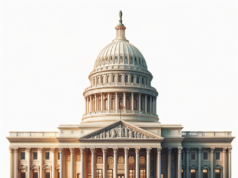In recent years, a notable shift has occurred in the landscape of American governance, as governors across the nation have increasingly taken bold legal actions to assert state authority. This trend marks a significant departure from the traditional balance of power between state and federal governments, reflecting a growing desire among state leaders to navigate complex issues ranging from public health to environmental regulations. As governors leverage legal strategies to enhance their autonomy, the implications of this newfound assertiveness are reverberating through the political, legal, and social spheres, prompting both support and opposition from various stakeholders.
The Rise of State Authority: Understanding the Context of Recent Legal Actions by Governors
The resurgence of state authority can be traced to a confluence of factors, including heightened political polarization, the COVID-19 pandemic, and increasing public discontent with federal policies. As states grappled with unprecedented challenges, governors found themselves at the forefront of decision-making, often stepping in to fill perceived voids left by federal inaction. This has led to a reexamination of the Tenth Amendment, which reserves powers not delegated to the federal government for the states. In this context, governors have begun to assert their rights more forcefully, positioning themselves as champions of state sovereignty and local governance. This shift reflects a broader trend of decentralization in American politics, where states are increasingly viewed as laboratories for democracy, capable of enacting innovative policies tailored to their unique needs.
Key Legal Strategies Employed by Governors to Assert State Power and Autonomy
Governors have adopted a variety of legal strategies to assert their power and autonomy, often employing executive orders, state legislation, and litigation as tools to challenge federal authority. Executive orders have become a popular mechanism for swiftly implementing policies, particularly in response to emergencies such as public health crises or natural disasters. Additionally, state legislatures have been mobilized to pass laws that counteract federal mandates, particularly in areas such as immigration, environmental regulations, and healthcare. Furthermore, governors have increasingly turned to the courts to defend state interests, filing lawsuits against federal agencies and challenging the constitutionality of federal actions. These strategies not only reinforce state authority but also signal a willingness to engage in legal battles that could redefine the boundaries of federalism in the United States.
Case Studies: Notable Instances of Governors Taking Bold Legal Action Across the Nation
Several governors have emerged as prominent figures in the movement to assert state power through legal action. For instance, Florida Governor Ron DeSantis has garnered national attention for his executive orders aimed at countering federal COVID-19 mandates, including mask and vaccine requirements. Similarly, Texas Governor Greg Abbott has taken a hardline stance on immigration, enacting state laws that challenge federal immigration policies and initiating lawsuits against the Biden administration. In California, Governor Gavin Newsom has pursued aggressive climate change initiatives, including legal actions against fossil fuel companies, positioning the state as a leader in environmental policy. These case studies illustrate the diverse approaches governors are taking to navigate complex issues while asserting their authority, often resulting in significant legal and political ramifications.
The Implications of State Power Expansion: Legal, Political, and Social Perspectives
The expansion of state power carries profound implications across legal, political, and social dimensions. Legally, the increasing assertiveness of governors raises questions about the balance of power between state and federal governments, potentially leading to a reevaluation of constitutional interpretations regarding federalism. Politically, this trend may exacerbate divisions between states, particularly in a highly polarized environment where governors are often seen as representatives of opposing ideologies. Socially, the actions taken by governors can have far-reaching consequences for citizens, influencing access to healthcare, education, and civil rights. As states navigate these complexities, the potential for conflict and cooperation between state and federal authorities will shape the future of governance in the United States.
Public Response: How Citizens and Advocacy Groups Are Reacting to State Actions
The public response to governors’ bold legal actions has been mixed, reflecting the diverse political landscape of the nation. Advocacy groups, citizens, and political organizations have mobilized in support of or opposition to these actions, often aligning along ideological lines. Supporters argue that governors are exercising necessary authority to protect their constituents and uphold state rights, while critics contend that such actions undermine federal standards and exacerbate inequalities. Public opinion polls indicate a growing divide, with some states experiencing heightened political engagement and activism as citizens rally around or against their governors’ decisions. This dynamic underscores the importance of public sentiment in shaping the trajectory of state power and governance.
Future Outlook: What the New Era of State Power Means for Governance and Federal Relations
As governors continue to assert their authority through bold legal actions, the future of governance and federal relations in the United States remains uncertain. The trend towards increased state power may lead to a more fragmented political landscape, where states pursue divergent policies that reflect their unique values and priorities. This could foster innovation and experimentation in governance, but it may also result in inconsistencies and conflicts that challenge the cohesion of the nation. Additionally, the evolving relationship between state and federal governments will likely prompt further legal battles, as both sides seek to define their roles in an increasingly complex political environment. Ultimately, the new era of state power presents both opportunities and challenges, necessitating careful consideration of the implications for democracy, governance, and the rule of law.
In conclusion, the bold legal actions taken by governors across the United States signify a pivotal moment in the evolution of state authority and federal relations. As governors navigate the complexities of governance in a rapidly changing political landscape, their actions will undoubtedly shape the future of American democracy. The implications of this trend extend beyond legal and political realms, influencing the lives of citizens and the fabric of society itself. As the nation moves forward, the interplay between state and federal powers will remain a critical area of focus, with the potential to redefine the principles of federalism that have long underpinned the American system of governance.




























































